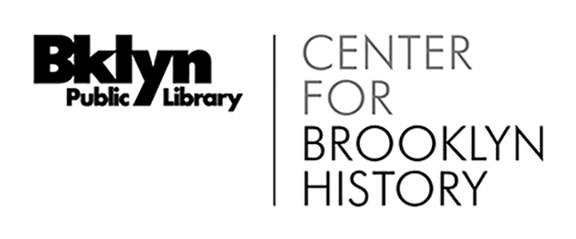Brevoort family papers
Call Number
Dates
Creator
Extent
Language of Materials
Abstract
The Brevoort family papers contain materials documenting the personal and business affairs of four generations of the Brevoort family, including correspondence, legal documents (estate records, wills, bonds, land conveyances and deeds, and business documents), miscellaneous printed material, genealogical notes, and one scrapbook.
Biographical note
The first members of the Brevoort family in America came from Holland prior to 1655 and soon thereafter settled in Bushwick, then a separate village that would eventually be annexed by the City of Brooklyn in 1855. After 20 years in Bushwick, the family purchased land in New York City (present-day Manhattan) where the family prospered. It wasn't until 1845 that members of the Brevoort family moved back to Brooklyn.
Henry Brevoort (1747-1841) was a successful farmer whose lands lay just outside of the early city limits of New York. His estate consisted of 86 acres between 9th Street and 18th Street, bounded by Fifth Avenue on the west and the Bowery on the east, thus part of today's West Village. The opening of Broadway up to 23rd Street forced New York City street commissioners to create a dog-leg bend at 10th Street, as Brevoort was determined to prevent the disruption of his estate. Brevoort and son Henry, Jr. prevented the opening of 11th Street between Broadway and the Bowery in the 1830s and 1840s to prevent the destruction of the old family farm house.
Henry Brevoort, Jr. (1782-1848) was widely respected for his adventurous travels and artistic interests. He accompanied Lewis and Clark on their expedition to the Pacific Northwest from 1803 to 1806 and spent a great deal of time in the North American wilderness working for John Jacob Astor's American Fur Company. He was equally at home and well received in salons throughout Europe during his travels abroad. Henry Brevoort, Jr. was a close friend of Washington Irving and was primarily responsible (along with Irving's brother Ebenezer) for the publication of the American edition of Irving's The Sketch Book of Geoffrey Crayon, Gent..
James Carson Brevoort (1818-1887), Henry Jr.'s son, was educated in Europe during his parents' travels. He graduated from Baron Fellenberg's school in Hofwyl, Switzerland and then earned a degree in civil engineering from the Ecole Centrale des Arts et Manufactures in Paris. He served as Washington Irving's private secretary following Irving's appointment as United States Minister to Spain in 1842. Brevoort married Elizabeth Dorothea Lefferts in 1845 and moved to Brooklyn. There he managed the large land holdings of his father-in-law, Judge Leffert Lefferts. In Brooklyn, Brevoort gained renown for his scholarly interest and public service. He studied history, entomology, and ichthyology and also served for many years as a member of the Brooklyn Board of Education and the Board of Water Commissioners. Brevoort also helped to found the Long Island Historical Society (now the Brooklyn Historical Society) in 1863, served as its President for 10 years, and was a Director of the Society until his death.
James Carson Brevoort's only child, Henry L. Brevoort (1849-1895), followed his father's interest in engineering and became one of the country's foremost patent and invention lawyers, with a client list that included Westinghouse, Western Union, and the New York and Brooklyn Bridge Company. He was also a founder in 1890 of the Brevoort Savings Bank in Brooklyn.
Arrangement
The collection is arranged by family member, type, and subject as appropriate.
Scope and Contents
The Brevoort family papers document the personal and business lives of four generations of Brevoort family members. The bulk of the papers, dating from 1828 to 1847, are chiefly the papers of Henry Brevoort, Jr., his son James Carson Brevoort, and his grandson Henry L. Brevoort. A significant amount of the collection consists of correspondence, primarily letters from James Carson Brevoort to family members, chiefly to his parents. The letters mostly relate to family and school news, although eight letters from 1841 describe an expedition into Quebec Province to survey the area and take daguerreotypes of the landscape.
Legal documents make up most of the remainder of the collection and include estate records, wills, bonds, land conveyances and deeds, and business documents. Many of the documents pertain to the opening of 11th Street (between Broadway and Bowery) in Manhattan.
The balance of the collection consists of genealogical notes, miscellaneous printed material, and a few non-Brevoort items including two pamphlets; a broadside; certificates; a 1791 petition for a cemetery in New Utrecht in Brooklyn; an 1830 playbill; Henry L. Brevoort's scrapbook of news clippings, many on engineering, 1868 to 1874; and detailed Brevoort family genealogical notes, which also include many references to the Lefferts family of Brooklyn.
Subjects
Families
Genres
Topics
Conditions Governing Access
Open to researchers without restriction.
Conditions Governing Use
The materials in this collection are in the public domain. While many items at the Center for Brooklyn History are unrestricted, we do not own reproduction rights to all materials. Be aware of the several kinds of rights that might apply: copyright, licensing and trademarks. The researcher assumes all responsibility for copyright questions.
Preferred Citation
Identification of item, date (if known); Brevoort family papers, 1977.285, Box and Folder number; Brooklyn Public Library, Center for Brooklyn History.
Immediate Source of Acquisition
Gift of the estate of Ruth Wright Brevoort, 1967.
About this Guide
Processing Information
The collection was originally foldered and a finding aid first prepared by Robert Sink as part of the Brooklyn Rediscovery project, 1978. The paper finding aid was scanned by Pratt GATEWAI intern Cesar Garza in 2006. The finding aid was then edited and reformatted by Dr. Marilyn Pettit in 2006-2007. This finding aid was revised and entered into Archivists' Toolkit as part of the project, "Uncovering the Secrets of Brooklyn's 19th Century Past: Creation to Consolidation," in 2011. The collection was rehoused and the finding aid revised by Dee Bowers in 2024.
